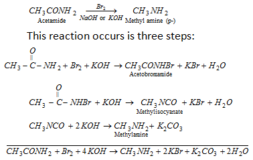Schrodinger wave equation

source : transtutors.com
Schrodinger wave equation-
In quantum mechanics , the Schrodinger wave equation is a mathematical equation that describes the changes over time of a physical system in which quantum effects such as wave particle duality are significant. These systems are called quantum systems . This equation is a central result in the study of quantum systems and its derivation was a landmark in the development of theory of quantum mechanics.
It was named after ERWIN SCHRODINGER.
Let us consider the vibration of a stretched string . The equation for such a wave motion is represented as,
Ψ = A sin 2π x/ λ ————eq 1
Ψ = wave function ; x = displacement ; λ = wave length ; A = amplitude of the wave
Differentiating the eq (1) with respect to ‘x’ ,
∂Ψ / ∂ x =A [ cos 2π x/ λ ](2π / λ )
∂Ψ / ∂ x = (2π A/ λ )[ cos 2π x/ λ ] ——— eq 2
Again differentiating the eq (2) with respect to ‘x’ ,
∂2Ψ / ∂ x2 = (2π A/ λ )[ – sin 2π x/ λ ] (2π / λ )
∂2Ψ / ∂ x2 = ( – 4π2 A/ λ 2)[ sin 2π x/ λ ] ——— eq 3
putting the value of ‘ Ψ’ from eq (1) to eq (3)
Ψ = A sin 2π x/ λ
∂2Ψ / ∂ x2 = ( – 4π2 / λ2)[ Asin 2π x/ λ ]
∂2Ψ / ∂ x2 = ( – 4π2Ψ/ λ2) ———— eq 4
This equation is applicable to all particles of waves like electrons , protons.
According to De Broglie equation,
λ = h / mu
1/λ = mu / h
1/λ2 = m2u2 / h2 ——- eq 5
putting the value of ‘ 1/λ2 ‘ from eq (5) to eq (4)
∂2Ψ / ∂ x2 = ( – 4π2Ψm2u2 / h2) ——–eq (6)
Kinetic energy = mu2/2
Total energy E = potential energy + Kinetic energy
E = V + mu2/2
mu2 = 2 (E-V) ———–eq 7
putting the value of ‘ mu2 ‘ from eq (7) to eq (6)
∂2Ψ / ∂ x2 = ( – 4π2 m. 2 (E-V) Ψ/ h2) = – 8π2m (E-V)Ψ / h2
∂2Ψ / ∂ x2 = – 8π2m (E-V)Ψ / h2 ————- eq 8
This is the wave equation for the particle moving along the x- axis. Eq (8) may be extended in three directions x , y , z. Hence,
∂2Ψ / ∂ x2 + ∂2Ψ / ∂ y2 + ∂2Ψ / ∂ z2 = – 8π2m (E-V)Ψ / h2
∂2Ψ / ∂ x2 + ∂2Ψ / ∂ y2 + ∂2Ψ / ∂ z2 + 8π2m (E-V)Ψ / h2 = 0 ————- eq 9
This is Schrodinger wave equation.
Eq (9) may also be written as,
∇ 2Ψ + 8π2m (E-V)Ψ / h2 = 0 ————- eq 10
This is also a form of Schrodinger wave equation.
∇ 2 is Laplacian operator
∂2/ ∂ x2 + ∂2 / ∂ y2 + ∂2 / ∂ z2 = ∇ 2
-∇ 2Ψ = 8π2m (E-V)Ψ / h2
-∇ 2Ψ h2 / 8π2m = (E-V)Ψ
-∇ 2Ψ h2 / 8π2m = EΨ – V Ψ
-∇ 2Ψ h2 / 8π2m + V Ψ = EΨ
[( -∇ 2 h2 / 8π2m)+ V ] Ψ = EΨ ———eq 10
This is also a form of Schrodinger wave equation.
HΨ = EΨ
[( -∇ 2 h2 / 8π2m)+ V ] Ψ = HΨ
H = [ V – (∇ 2 h2 / 8π2m) ———eq 11
H = Hamiltonian operator , E = Eigen value
Ψ (wave function) has no physical significance, Ψ only represents the amplitude of the electron wave. Ψ2 represents the probability of locating an electron associated with a specific energy.







